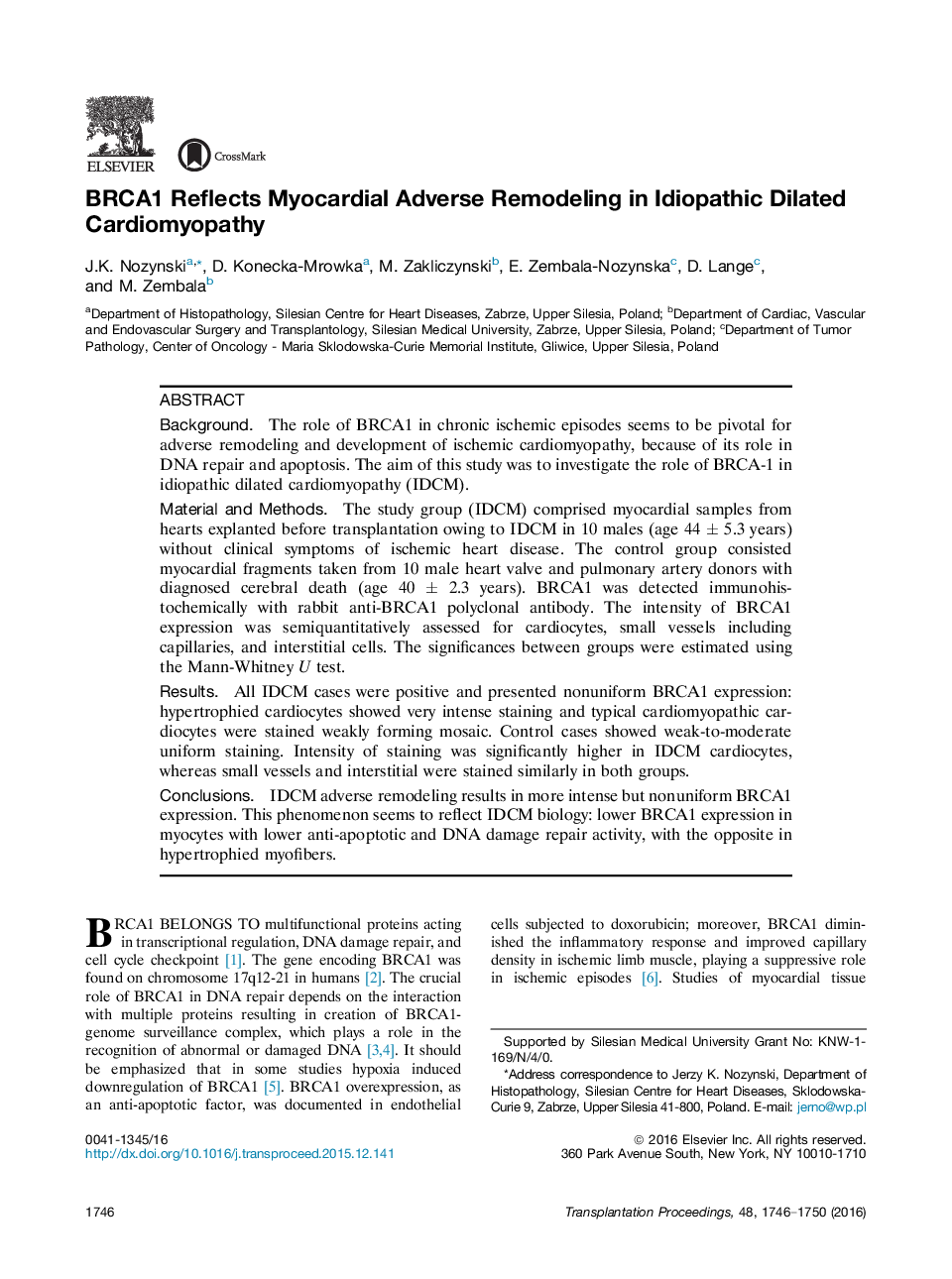| Article ID | Journal | Published Year | Pages | File Type |
|---|---|---|---|---|
| 4256111 | Transplantation Proceedings | 2016 | 5 Pages |
•BRCA1 protein is a marker of diffuse and nonuniform damage of cardiocytes in dilated cardiomyopathy biopsy samples.•Immunohistochemical staining of BRCA1 was made in dilated cardiomyopathy and healthy control myocardial specimens.•All IDCM cases presented nonuniform BRCA1, especially in hypertrophied cells, whereas control shown and uniform staining.•This phenomenon suggests increased BRCA1 expression as an result of anti-apoptotic activity in dilated cardiomyopathy.
BackgroundThe role of BRCA1 in chronic ischemic episodes seems to be pivotal for adverse remodeling and development of ischemic cardiomyopathy, because of its role in DNA repair and apoptosis. The aim of this study was to investigate the role of BRCA-1 in idiopathic dilated cardiomyopathy (IDCM).Material and MethodsThe study group (IDCM) comprised myocardial samples from hearts explanted before transplantation owing to IDCM in 10 males (age 44 ± 5.3 years) without clinical symptoms of ischemic heart disease. The control group consisted myocardial fragments taken from 10 male heart valve and pulmonary artery donors with diagnosed cerebral death (age 40 ± 2.3 years). BRCA1 was detected immunohistochemically with rabbit anti-BRCA1 polyclonal antibody. The intensity of BRCA1 expression was semiquantitatively assessed for cardiocytes, small vessels including capillaries, and interstitial cells. The significances between groups were estimated using the Mann-Whitney U test.ResultsAll IDCM cases were positive and presented nonuniform BRCA1 expression: hypertrophied cardiocytes showed very intense staining and typical cardiomyopathic cardiocytes were stained weakly forming mosaic. Control cases showed weak-to-moderate uniform staining. Intensity of staining was significantly higher in IDCM cardiocytes, whereas small vessels and interstitial were stained similarly in both groups.ConclusionsIDCM adverse remodeling results in more intense but nonuniform BRCA1 expression. This phenomenon seems to reflect IDCM biology: lower BRCA1 expression in myocytes with lower anti-apoptotic and DNA damage repair activity, with the opposite in hypertrophied myofibers.
